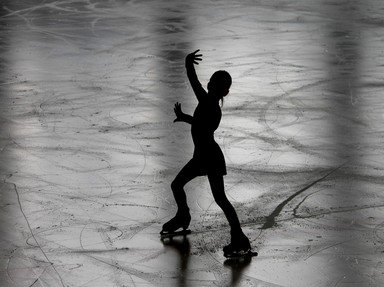Quiz Answer Key and Fun Facts
1. Where did Torvill and Dean begin their skating career?
2. Where did Torvill and Dean win their first trophy as a team?
3. What year did Torvill and Dean first become British ice dancing champions?
4. What two events, which would prove pivotal to Torvill and Dean's careers, occurred in 1978?
5. In what Olympiad did Torvill and Dean first compete?
6. By 1981, having won the World Figure Skating championship, Torvill and Dean were tired of stringing together ballroom dance steps with required skating elements such as lifts and jumps for their programs. What was the name of the first routine in which they told a story with their ice-dancing?
7. "Barnum" was a Torvill and Dean excursion into storytelling in ice-dance. What is this routine about?
8. What year did Torvill and Dean first perform "Barnum"?
9. In what Olympiad did Torvill and Dean become record making champions?
10. Torvill and Dean's receiving three 5.9s and nine 6.0s for their Olympic routine was an unprecedented achievement.
11. To what piece of music did Torvill and Dean skate their record making Olympic free style dance?
12. What color costumes did Torvill and Dean wear for their record making Olympic free style dance?
13. All aspects of Torvill and Dean's Olympic gold winning free style dance were unusual. Which of those listed was uncommon but not wholly unheard of?
14. Was Torvill and Dean's free style dance the only innovative and creative aspect of their Olympic program?
15. After becoming Olympic champions, Torvill and Dean's last competition as amateurs was the world championships in March, where they once more presented their Olympic program. An accident delayed the start of the competition, and thus the live telecast, by some four hours. What happened?
Source: Author
Catreona
This quiz was reviewed by FunTrivia editor
1nn1 before going online.
Any errors found in FunTrivia content are routinely corrected through our feedback system.
